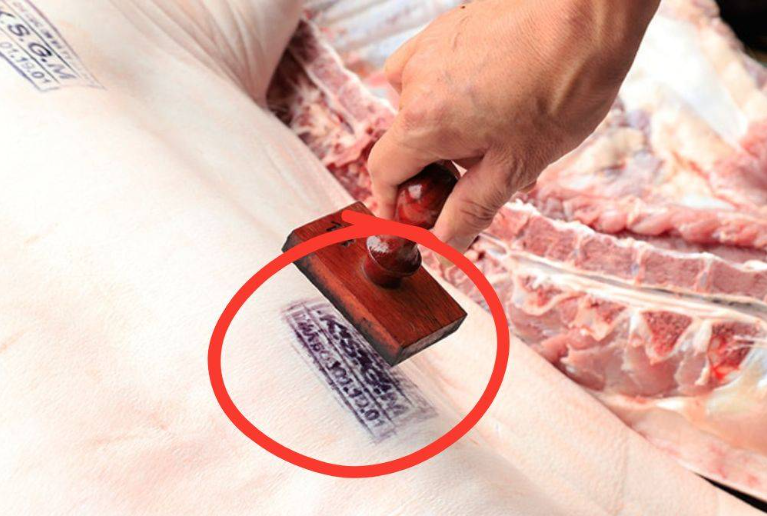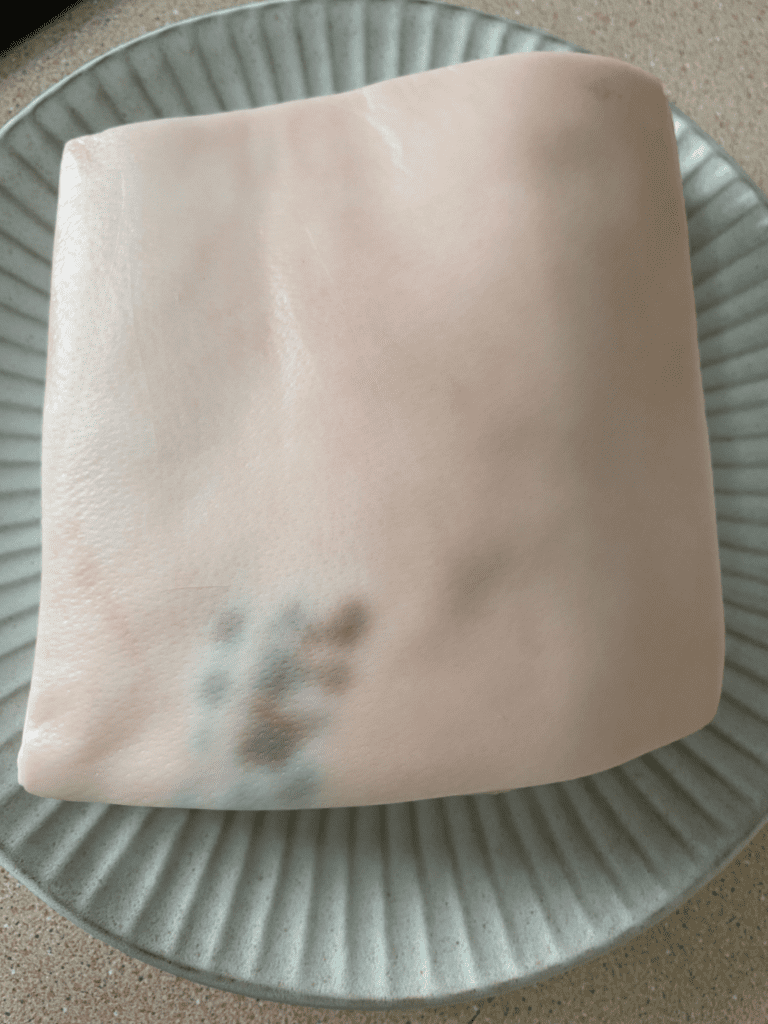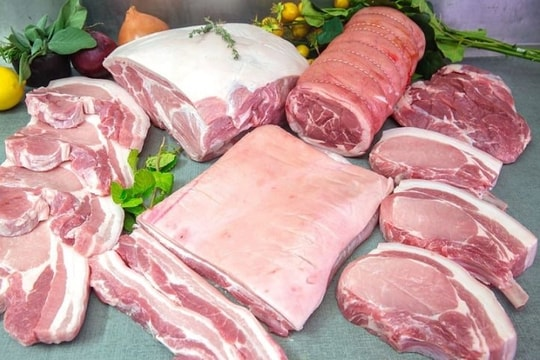In a world where food safety and transparency are more critical than ever, many consumers have noticed markings, stamps, and barcodes directly on food products like pork. Naturally, this raises questions: What kind of ink is being used? Is it safe for consumption? Let’s unravel the mystery and address any concerns about printer ink on pork.
What Kind of Ink Is Used on Pork?

When you spot markings on pork, rest assured it’s not your average office printer ink. Instead, it’s food-grade ink, specifically developed for direct contact with consumable items.
Food-grade ink is made from edible, non-toxic ingredients and undergoes extensive testing to ensure its safety. Regulatory agencies like the Food and Drug Administration (FDA) and the European Food Safety Authority (EFSA) approve these inks for use, ensuring they meet stringent health standards. These inks are used to stamp information like inspection marks, batch codes, or safety certifications on meat.
Why Food-Grade Ink Is Safe for Consumption
You might still feel uneasy about ink on your food, but here’s why food-grade ink is entirely safe when applied correctly:
- Non-Toxic Ingredients: The ink is composed of substances that are harmless, even in trace amounts.
- Minimal Transfer: The ink remains on the surface of the meat and does not penetrate deeply into the pork.
- Non-Reactive Properties: Food-grade ink doesn’t react with the meat, preserving its taste, texture, and quality.
However, it’s essential to ensure the ink used is specifically certified for food use. Non-food-grade inks, if mistakenly used, could pose a risk. Fortunately, this is rare in regulated markets.
Why Is Ink Applied to Pork in the First Place?
The markings you see on pork serve several important purposes:
- Inspection Stamps: These stamps indicate that the meat has passed stringent safety and quality checks.
- Traceability: Barcodes and batch codes allow manufacturers and retailers to track the product through the supply chain, enhancing transparency.
- Regulatory Compliance: Many regions require specific labeling or markings to provide information about the product’s origin, weight, or processing details.
Rather than being a cause for concern, these markings demonstrate that the product has undergone proper inspection and adheres to food safety standards.
The Strict Regulations Governing Food-Grade Ink
The use of ink on food products like pork is highly regulated to protect consumers. Agencies such as the FDA, EFSA, and other international regulatory bodies enforce strict guidelines for the production, testing, and application of food-grade inks.
Here’s how these regulations ensure safety:
- Ingredient Disclosure: Manufacturers must use only ingredients deemed safe for human consumption.
- Rigorous Testing: Food-grade inks are subjected to extensive testing to confirm they don’t pose health risks or compromise food quality.
- Controlled Application: Guidelines dictate how much ink can be applied and under what conditions.
These measures ensure that any ink markings on your pork are safe, even if consumed accidentally.
How to Ensure the Safety of Inked Pork

While food-grade ink is safe, it’s understandable if you still want to take extra precautions. Here’s how you can ensure the pork you purchase is safe to consume:
- Inspect the Packaging: Look for inspection marks or certifications on the packaging, indicating that the product complies with food safety standards.
- Rinse the Meat: While food-grade ink is safe, rinsing the pork can help remove any surface residue before cooking.
- Buy From Trusted Suppliers: Purchase your meat from reputable retailers known for adhering to food safety protocols.
- Cook Thoroughly: Proper cooking eliminates any bacteria that could compromise the meat’s safety, ensuring a safe and delicious meal.
Common Myths About Ink on Food—Debunked
There are plenty of misconceptions about ink on food, particularly meat. Let’s tackle some of these myths:
- Myth: All Ink Is Dangerous
Truth: Only industrial or non-food-grade inks are harmful. Food-grade inks are rigorously tested and completely safe for use on consumable products. - Myth: Ink Changes the Taste of the Meat
Truth: Food-grade ink has no impact on the flavor, texture, or overall quality of the meat. - Myth: Marked Meat Should Be Avoided
Truth: Marks like inspection stamps and barcodes indicate that the product has been inspected and meets safety standards. They are a positive sign of quality control.
The Science of Food-Grade Ink
Food-grade inks are a fascinating innovation. Unlike regular inks, they’re designed to meet the following criteria:
- Edibility: Ingredients must be non-toxic and safe for ingestion, even in small amounts.
- Stability: The ink must remain intact on the food surface without breaking down or altering the food’s properties.
- Visibility: It must provide clear, readable markings without affecting the aesthetic or appeal of the product.
These characteristics make food-grade ink a reliable and practical solution for food labeling.
How Food-Grade Ink Improves Food Safety

The use of food-grade ink isn’t just about convenience—it’s a critical part of modern food safety practices. Here’s how:
- Traceability: Markings ensure that every piece of pork can be tracked from production to sale, enabling quick responses to recalls or contamination concerns.
- Transparency: Labels provide consumers with essential information about the product’s origin and quality.
- Compliance: Regulatory markings confirm that the product has been inspected and meets health and safety standards.
What You Can Do as a Consumer
As a consumer, you have the power to make informed decisions about the food you buy. Here’s what you can do:
- Stay Informed: Understand what the markings on your meat mean and the safety standards they represent.
- Choose Reputable Retailers: Buy from trusted sources that follow strict food safety regulations.
- Ask Questions: If you’re ever in doubt, don’t hesitate to ask your butcher or retailer about the markings and the ink used.
The Bottom Line
The ink you see on pork—when certified as food-grade—is entirely safe. It plays a vital role in ensuring food safety, traceability, and compliance with regulations. While the idea of ink on your food might feel unusual, rest assured that it’s designed to pose no risk to your health.
By understanding the purpose and safety of food-grade inks, you can approach your meals with confidence and peace of mind. So, the next time you spot a stamp or barcode on your pork, take it as a sign of quality assurance and enjoy your meal worry-free.
Conclusion
Is printer ink on pork safe? Absolutely—when it’s food-grade and regulated. These markings are more than just ink—they’re a symbol of safety, transparency, and quality control. By staying informed and choosing reputable suppliers, you can confidently enjoy your food, knowing it meets the highest safety standards. So go ahead, cook up that pork and savor every bite!


